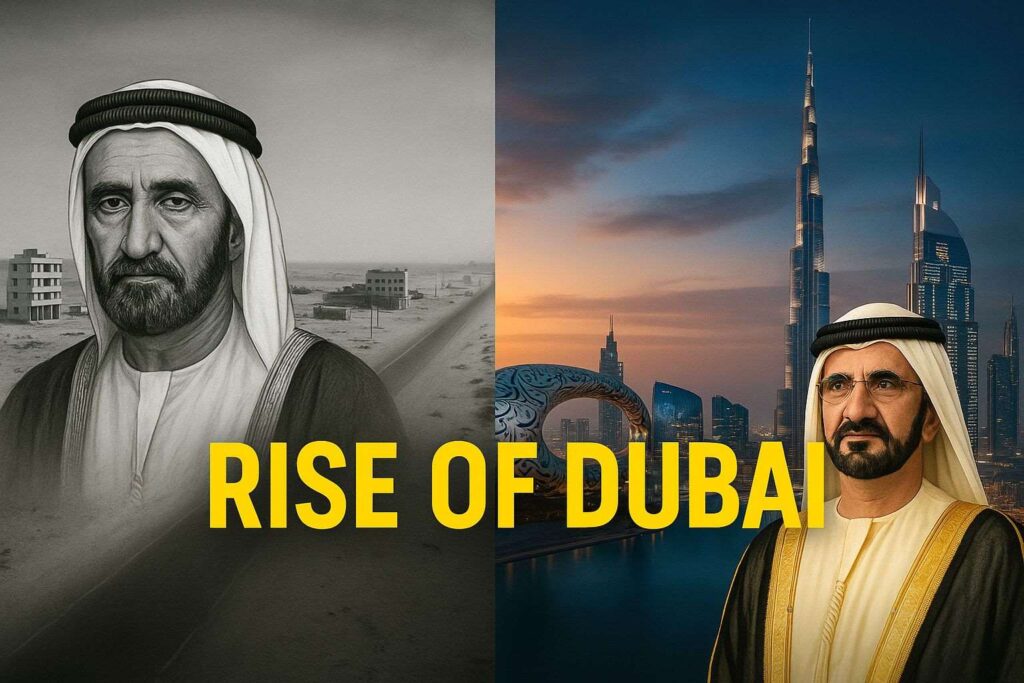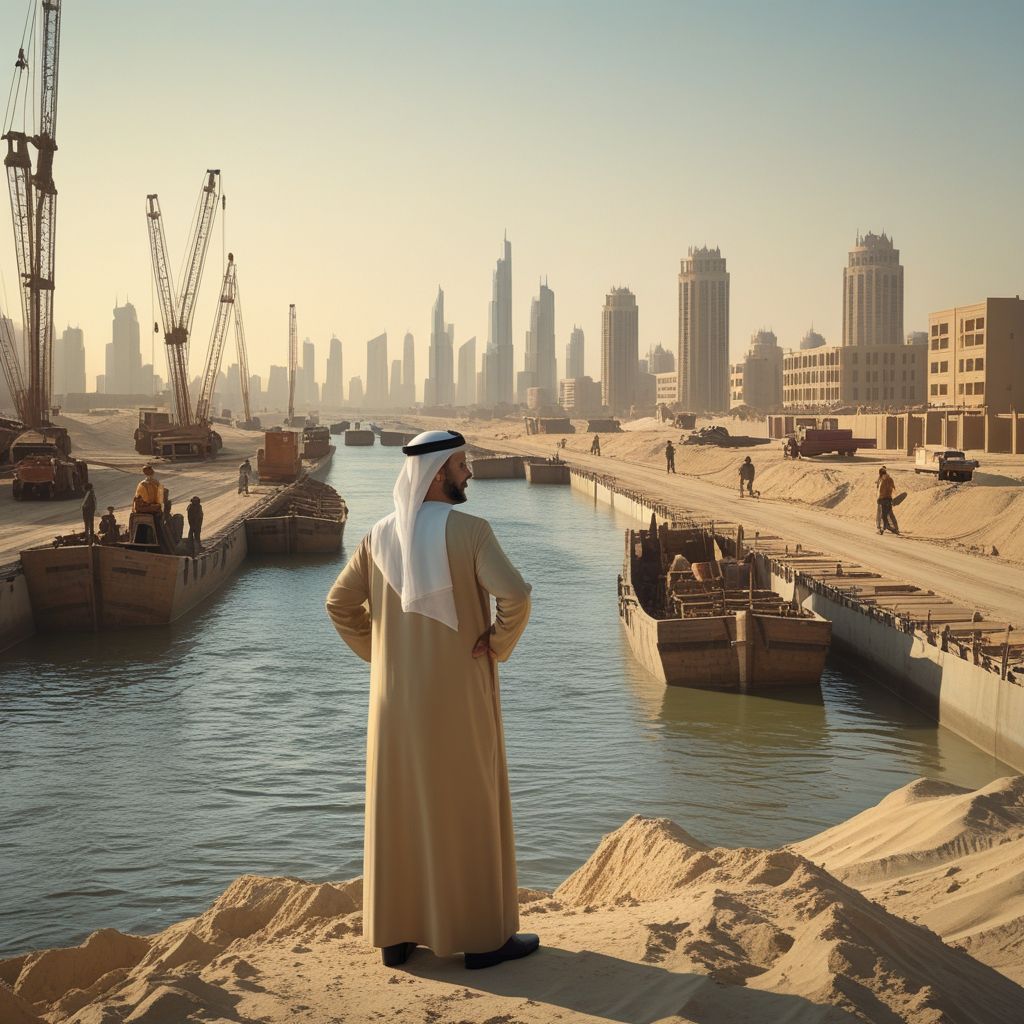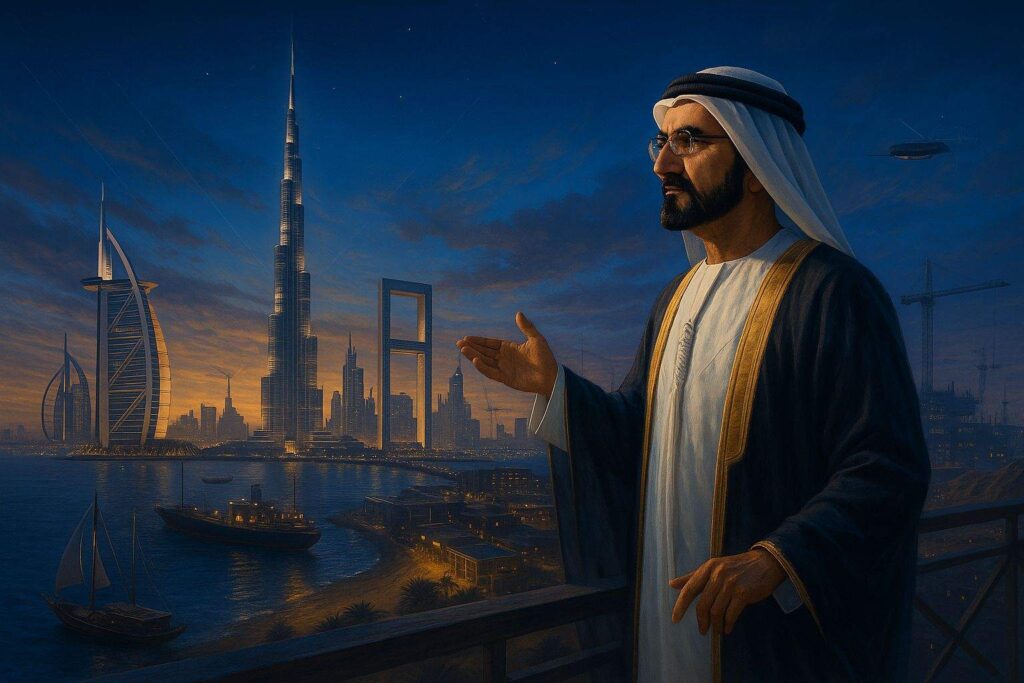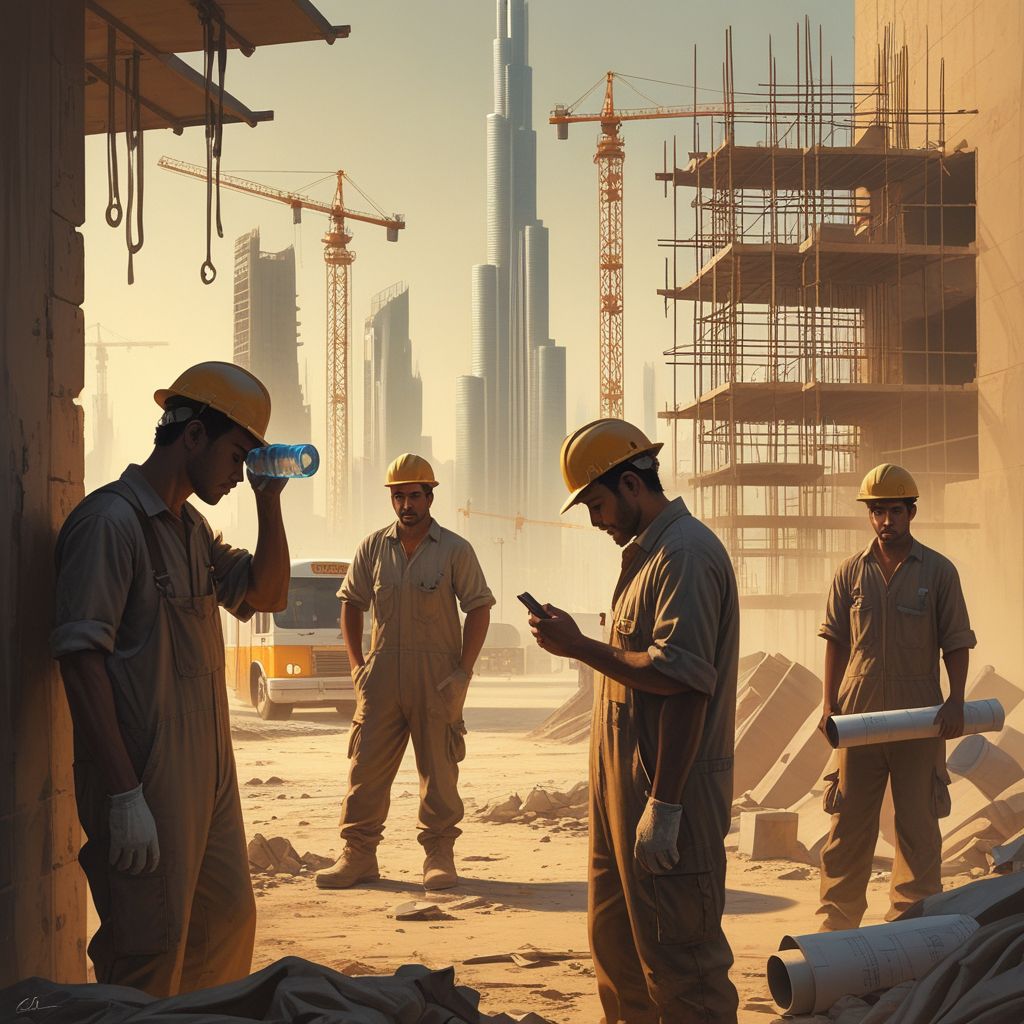Uncovering the Secrets Behind Rise of Dubai / A Hidden Side That Will Blow Your Mind

In a world where economic landscapes are constantly shifting, one city stands as a testament to audacious vision and relentless ambition: Dubai. From its humble origins as a pearl-diving and fishing village, this desert outpost has transformed into a gleaming global metropolis, a beacon of commerce, luxury, and innovation. Its rapid rise often sparks curiosity, prompting questions about the forces that propelled it from obscurity to international prominence.
The narrative of Dubai’s development is not merely a tale of oil wealth, as many might assume, but a complex tapestry woven with strategic foresight, bold investments, and an unwavering commitment to diversification. This article delves into the pivotal moments and visionary leadership that sculpted Dubai into the economic powerhouse it is today, exploring the unique strategies that set it apart on the global stage.
From Fishing Village to Global Hub: A Historical Perspective
To truly appreciate Dubai’s meteoric rise, one must journey back in time to the early 19th century. In 1820, the area now known as Dubai was little more than a modest fishing village, part of a collection of independent sheikhdoms. These territories, often referred to as the Trucial States, were characterized by their strategic location along vital trade routes between Europe and Asia. The British, seeking to secure their passage to India, established a presence in the region, primarily to curb piracy. While their influence brought a degree of stability, it did not initially foster significant development, as the Trucial States served primarily as a transit point.

A pivotal moment arrived in 1833 when Sheikh Maktoum bin Butti, a visionary leader, separated Dubai from the Abu Dhabi Sultanate, establishing it as an independent entity. This act is widely regarded as the founding of modern Dubai, laying the groundwork for the ruling Maktoum family’s enduring legacy. For decades, the local economy revolved around pearl diving, a lucrative industry that sustained the community. However, the global pearl market’s collapse in the mid-20th century, largely due to the advent of cultured pearls, necessitated a new economic direction.
The Visionary Leadership of Sheikh Rashid bin Saeed Al Maktoum
The true transformation of Dubai began in earnest with the ascension of Sheikh Rashid bin Saeed Al Maktoum as ruler in 1958. A leader of extraordinary foresight, Sheikh Rashid recognized Dubai’s inherent geographical advantage at the crossroads of Asia, Africa, and Europe. He envisioned Dubai not as a mere stopover, but as a bustling center for trade, transport, and finance. This ambition was solidified during his visit to Europe in 1959, where he was deeply impressed by the advanced infrastructure and bustling commercial centers.
Upon his return, Sheikh Rashid embarked on an ambitious program of infrastructure development. His most significant undertaking was the dredging and widening of the Dubai Creek, a natural inlet that, while navigable by small boats, was insufficient for larger vessels. This monumental project, financed through significant loans and met with initial skepticism, was a testament to his unwavering belief in Dubai’s potential. He understood that a deep-water port was essential to attract international shipping and establish Dubai as a regional maritime hub. This bold investment laid the foundation for the city’s future prosperity, attracting ships and fostering a vibrant commercial ecosystem.

Even with the discovery of oil in Dubai in 1966, Sheikh Rashid’s vision remained steadfastly focused on diversification. Unlike many of its neighbors, Dubai’s oil reserves were relatively modest. Recognizing that this resource was finite, Sheikh Rashid famously declared, “My grandfather rode a camel, my father rode a camel, I ride a Mercedes, my son rides a Land Rover, his son will ride a Land Rover, but his son will ride a camel.” His words emphasized the urgency of using oil revenues wisely — not for fleeting luxury, but to build long-term infrastructure that would sustain Dubai’s future beyond fossil fuels. The funds generated from oil were meticulously channeled into building roads, schools, hospitals, and, crucially, expanding port facilities.
The Birth of a Nation and the Rise of Free Zones
The late 1960s and early 1970s marked another significant turning point. With the British withdrawal from the region in 1968, the Trucial States faced a new geopolitical reality. In December 1971, six of these emirates, including Dubai and Abu Dhabi, united to form the United Arab Emirates (UAE), with Ras Al Khaimah joining a year later. This federation solidified the region’s political landscape and provided a stable framework for future growth.
Under this new structure, the ruler of Abu Dhabi would serve as President, and the ruler of Dubai as Prime Minister, ensuring a balance of power and continued focus on development. Sheikh Rashid’s strategic genius was further exemplified by the establishment of free zones. Recognizing the need to attract foreign investment and businesses, he declared Dubai’s ports, most notably Jebel Ali, as commercial free zones. This revolutionary concept meant that businesses operating within these zones were exempt from import duties, export duties, and manufacturing taxes.

This bold move, unprecedented at the time, transformed Dubai into an irresistible magnet for international trade and commerce. It significantly reduced operational costs for businesses, making Dubai an incredibly attractive location for re-export, manufacturing, and logistics. The success of Port Rashid, built in 1972, paved the way for the even larger Jebel Ali Port in 1979, which remains one of the largest ports in the Middle East today.
Diversification Beyond Oil: Aviation and Tourism
While other oil-rich nations focused on immediate gains, Dubai continued to invest in a diversified economy. A key component of this strategy was the development of a world- class aviation sector. Recognizing the strategic importance of air travel, particularly for connecting East and West, Dubai invested heavily in its airport infrastructure. This foresight led to the establishment of Emirates Airline in 1985. With substantial financial backing from the Dubai government and a tax-free operational environment, Emirates rapidly grew into a global aviation giant, effectively rerouting significant air traffic through Dubai and further cementing its position as a global transit hub.

Simultaneously, Dubai embarked on an ambitious journey to become a premier tourist destination. Sheikh Rashid understood that as more ships and flights passed through Dubai, people would inevitably follow. To encourage longer stays and attract visitors, Dubai cultivated an open and welcoming environment, distinct from some of its more conservative neighbors. This approach, coupled with continuous investment in hospitality and entertainment infrastructure, laid the groundwork for a booming tourism industry. The vision was to create a destination that offered unparalleled experiences, drawing visitors from across the globe.
The Legacy Continues: Sheikh Mohammed bin Rashid Al Maktoum
Upon Sheikh Rashid’s passing in 1990, his son, Sheikh Mohammed bin Rashid Al Maktoum, inherited the mantle of leadership and accelerated Dubai’s trajectory with even greater vigor. Sheikh Mohammed shared his father’s audacious vision, believing that only extraordinary projects could capture global attention and drive sustained growth.

This philosophy led to the construction of iconic landmarks that have become synonymous with Dubai’s image, such as the Burj Al Arab, a sail-shaped luxury hotel built on an artificial island, and later, the Burj Khalifa, the world’s tallest building. These architectural marvels were not merely symbols of opulence but strategic investments designed to elevate Dubai’s global profile and attract high-value tourism and business.
Under Sheikh Mohammed’s leadership, Dubai continued to innovate, addressing challenges such as water scarcity through advanced desalination technologies. The commitment to a tax-free environment for individuals and businesses was further solidified, making Dubai an attractive haven for global talent and capital. This policy, combined with a robust tourism sector and thriving trade, allowed Dubai to generate substantial revenue without relying on direct taxation of its residents or businesses. The influx of international businesses and a diverse expatriate population further fueled Dubai’s economic engine, transforming it into a truly cosmopolitan city.
The Social Contract: Benefits for Emirati Citizens
Dubai’s unique economic model extends to its citizens, who enjoy an exceptional quality of life. Emirati citizens, defined by their lineage prior to 1925 or having Emirati parents, receive a comprehensive suite of benefits. These include free education, free healthcare, housing allowances, and even monthly stipends. This robust social welfare system ensures a high standard of living and contributes to a contented populace. The government’s philosophy is that a happy citizenry is less likely to seek political change, a strategy that has largely succeeded in maintaining stability in a region often prone to unrest. While citizenship for foreigners is highly restricted, it is possible for individuals with exceptional skills in fields like art, science, or medicine, or for significant investors, though without voting rights.
The Unseen Workforce: Challenges and the Kafala System
While Dubai’s glittering facade is a testament to its rapid development, it is important to acknowledge the significant human effort behind this transformation. The vast majority of Dubai’s workforce comprises expatriate laborers, primarily from South Asia and Southeast Asia, who have played an indispensable role in building the city’s infrastructure. These workers often operate under the Kafala system, a sponsorship-based employment framework prevalent in many Gulf countries. Under this system, a worker’s legal status is tied to their employer, who sponsors their visa and employment.

While the Kafala system is intended to regulate migrant labor, it has faced considerable criticism from human rights organizations, which have highlighted instances of exploitation and abuse. Concerns include low wages, poor working conditions, and restrictions on workers’ ability to change jobs or leave the country without employer consent. Although reforms have been introduced in recent years to address some of these issues, challenges persist. The stark contrast between the lavish lifestyles of some residents and the arduous conditions faced by the construction and service industry workers remains a complex aspect of Dubai’s rapid growth story.
Conclusion: A City Forged by Vision and Ambition
Dubai’s journey from a modest fishing village to a global economic powerhouse is a compelling narrative of vision, strategic planning, and relentless execution. It is a city that defied geographical limitations and conventional wisdom, leveraging its strategic location and bold leadership to create a diversified, thriving economy. While its success is undeniable, it also presents a nuanced picture, highlighting both the triumphs of ambitious development and the social complexities inherent in such rapid transformation. Dubai stands as a powerful example of what can be achieved when a clear vision is pursued with unwavering determination, continually adapting and innovating to secure its place on the world stage.


